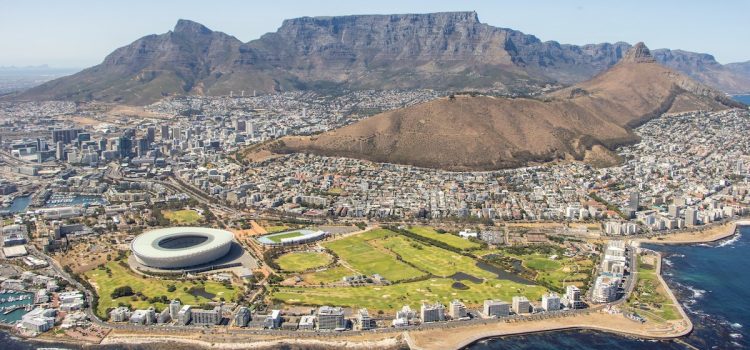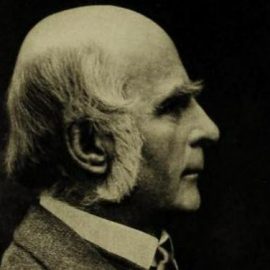

This article is an excerpt from the Shortform book guide to "Apocalypse Never" by Michael Shellenberger. Shortform has the world's best summaries and analyses of books you should be reading.
Like this article? Sign up for a free trial here.
Should we slow the global efforts of industrialization or accelerate them? Which is better for the planet, including humans?
Climate alarmists would have us believe that industrialization is to blame for the planet’s impending doom. Michael Shellenberger urges us to look at the connection between industrialization and climate change from a curative perspective rather than a causal one.
Keep reading to see why Shellenberger believes that the solution to our climate problems relies on the industrialization of developing countries.
Industrialization and Climate Change
Climate activists point the finger at industrialization and push seemingly environmentally friendly ideas such as natural farming instead of modern agriculture. Shellenberger says this is wishful thinking at best and destructive at worst. He contends that we need to view industrialization and climate change differently, arguing that the way to save the planet is to save humans first. Bringing modern industry, modern farming, and cheap electrical power to the world lifts people out of poverty, increases urbanization, concentrates resource usage, and lets more of the planet go back to nature.
The current positive environmental trends enjoyed in the developed world can be shared because 1) industrialization frees people from struggling daily to survive, 2) industrial farming techniques let us reduce how much land we need to feed people, and 3) artificial products save plants and animals from being used as clothing and building materials.
It’s a historical fact in the US and Europe that industrialization lifts people out of poverty. It’s been especially empowering for women, for whom it gave a path toward financial independence away from traditional, home-based gender roles. Shellenberger claims this same process is taking place today in the developing world. Young men and women are moving from farms to the cities, where manufacturing work brings them higher wages and gives them more free time to pursue education. And, because city dwellers don’t produce their own food, this creates more economic demand for the farmers who don’t choose to move to the cities.
(Shortform note: Given the worldwide trend toward increasing urbanization, modern city planners are looking for ways to make cities more energy efficient and environmentally friendly. Examples include reintroducing vegetation to combat the heat of buildings and concrete, using cable cars to enhance public transportation, and making better use of vertical space as an antidote to urban sprawl. This last transition may have been given a jumpstart by the shift toward people working from home. Faced with a decline in demand for traditional office space, real estate developers have begun converting commercial office buildings into apartments.)
Environmental groups should therefore be working with farmers to increase agricultural yields in concentrated regions close to the cities so that natural areas with more biodiversity can be better preserved. Shellenberger says that this can be achieved by implementing industrial farming, which he admits has a deservedly bad reputation due to issues of animal cruelty. However, public outcry has resulted in improvements in the last 20 years, resulting in more humane conditions for animals while minimizing their impact in terms of land use and emissions. Free-range farms, while emotionally appealing, take a much greater toll on the environment.
(Shortform note: In addition to industrial farming practices already used in the developed world, advances in data collection and robotics can further enhance crop yield and livestock handling. Data tools allow farmers to monitor plant and animal health and specifically tailor food and water needs. Meanwhile, the development of lab-grown meat and artificial substitutes may one day obviate the need for sprawling, resource-intensive cattle ranches or inhumane industrial farms. However, at present such meat alternatives are cost-prohibitive for the average consumer.)
In order to accept industrialization as a solution, Shellenberger says the main emotional hurdle is to acknowledge that artificial products are better than natural ones. This is easy to understand in some situations. After all, isn’t wearing artificial fur more ethical than slaughtering wildlife for their pelts? Industrial, unnatural farming techniques let farmers dramatically increase crop production while reducing the amount of farmland needed. And, nuclear power, for all its Cold War stigma, will always be the most efficient, power-dense way to heat and light our cities and our homes, far better than “natural” wind and solar power.
(Shortform note: The debate between artificial and natural products is complicated by the difficulty of defining what “natural” even means. In Natural, religious scholar Alan Levinovitz describes our modern tendency to equate nature with goodness as a theological fallacy not grounded in science. While mythologizing nature has deep roots in human culture, Levinovitz argues that it can distort our thinking so that we turn our backs on the benefits of modernity in favor of so-called “natural” foods, medicines, and lifestyles.)
Yet, there’s always been a “back to nature” movement that prizes a dreamy oneness with the natural world. Shellenberger insists that we give up this fantasy. The only way forward into a green future is to lift people up to all the benefits of modernity, and not turn the clock back to the destructive ways of the past.
(Shortform note: In How to Avoid a Climate Disaster, Bill Gates agrees with Shellenberger that regressing technological development and progress is not a viable or desirable solution to climate change. However, he sets reducing carbon emissions as our top environmental priority and states that the chief responsibility lies at the level of national governments. Businesses bear some of the burden, too, but the most effective step individuals can take is to become more involved in the political process through which we can push for meaningful change.)

———End of Preview———
Like what you just read? Read the rest of the world's best book summary and analysis of Michael Shellenberger's "Apocalypse Never" at Shortform.
Here's what you'll find in our full Apocalypse Never summary:
- An assessment of the climate crisis from a rational perspective
- How climate change alarmists are doing more harm than good
- The problems with renewable energy and why we should switch to nuclear






